ChatGPT vs. Grok AI: What’s the difference?
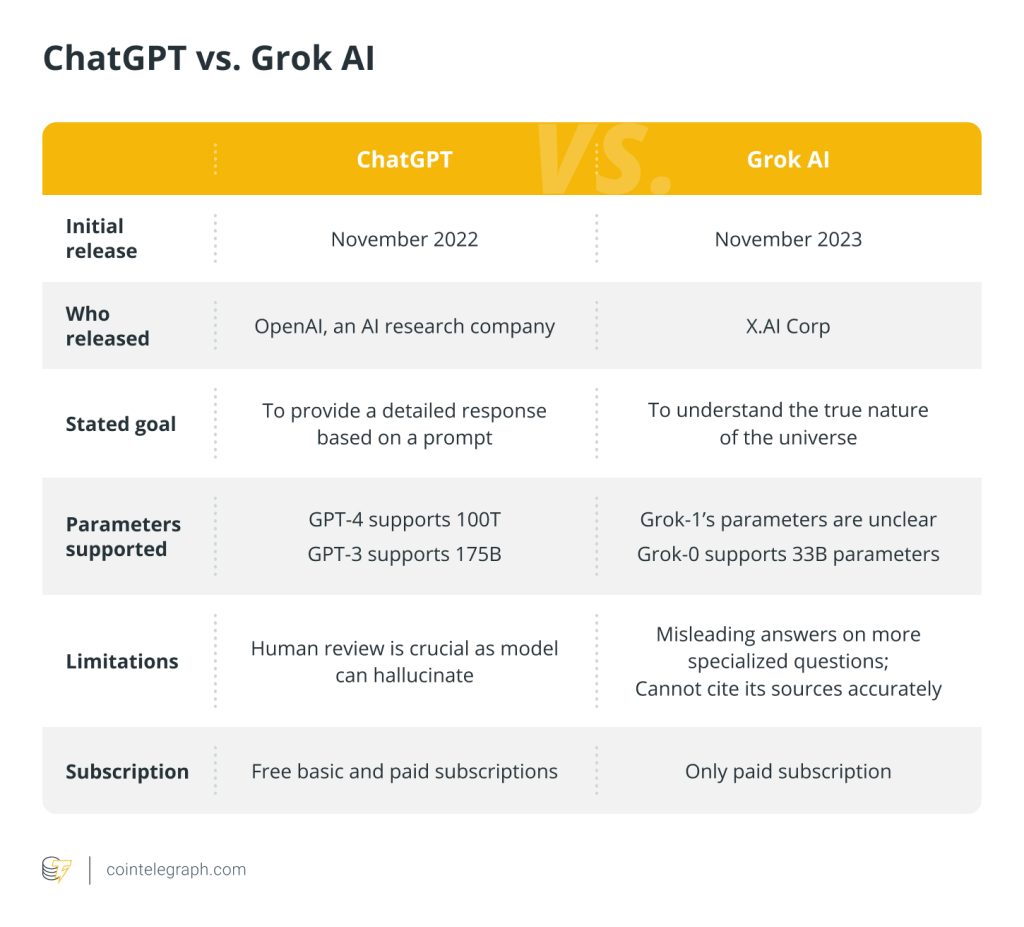

A clash of titans is happening in the artificial intelligence (AI) space. Two conversational AI bigwigs, led by two men of global stature who once sat in the same boardroom, are battling for supremacy. The upheaval unleashed by these projects of gigantic technological proportions is adding a new dimension to the realm of AI chatbots that has already made computers behave pretty much like humans, capable of producing conversational content, answering questions and translating languages.
The projects battling out are ChatGPT and Grok AI. The former is headed by Sam Altman, CEO of OpenAI and a leading figure of the AI spring, while the man at the helm of Grok AI is none other than the superhero of Tesla, Elon Musk. Interestingly, they were in the same boardroom when they launched OpenAI in 2015 to challenge Google in the AI domain.
What is ChatGPT?
ChatGPT is a natural language processing tool that can make human-like conversations. The “GPT” refers to the “generative pre-training transformer,” which indicates how it processes language. It can answer questions and assist users with tasks such as composing short or long-form text, creating images or videos, and coding.
Resembling customer service chatbots that one can find on the digital platforms of business enterprises, ChatGPT lets users enter prompts to receive generated content. The chatbot is trained with reinforcement learning through human feedback (RLHF), which enables it to enhance future responses with machine learning. RLHF is a technique incorporating humans into the loop to train AI systems.
What is Grok AI?
Rolled out by Elon Musk’s xAI startup, Grok AI is a chatbot powered by a large language model (LLM) named Grok-1. Though the parameters supported by Grok-1 LLM are still unclear, its predecessor, Grok-0, was trained with 33 billion parameters.
The chatbot has borrowed its name from The Hitchhiker’s Guide to the Galaxy, a comedy science fiction franchise that first appeared on a 1978 BBC Radio show. Oxford Languages defines the term as “understanding something intuitively or by empathy.” Grok AI is the latest entrant in the AI chatbot club after ChatGPT, Google Bard, Claude AI, Meta AI and others.
How to use ChatGPT
One can access ChatGPT via chat.openai.com or the mobile app. One needs to sign up on the web platform or the free mobile app to use the chatbot. Once the sign-up process is complete, one needs to log in, and the ChatGPT home page will appear. The free version available is GPT-3.5.
The left sidebar displays the activities of the user. One could also opt for an upgrade plan that enables access to GPT-4, Dall-E and more. Once ChatGPT provides a response, the user has a few options:
- Enter a new prompt
- Regenerate the response
- Copy the response
- Like or dislike the response
- Share the response.
For enterprises with several individuals requiring access to the AI system, ChatGPT Enterprise is available, though it has the same features as ChatGPT Plus.

How to use Grok AI
Grok AI is available on X (formerly Twitter) for premium service subscribers and as a standalone app. To use Grok on X, one must have an account on the platform. When one logs in, they can see the Grok option on the sidebar at the left. One must click the Grok option and then the “Subscribe Now” button. Then, they need to follow the billing instructions and make the payment.

When using the app, one needs to download and install it. After that, the user has to complete the account creation process and pay for the subscription.
Two features of Grok are now available for the user: “Fun” mode and “Regular” mode. When one chooses Regular mode, the chatbot answers with plain facts. In Fun mode, responses carry a humorous and sarcastic tone.
Now that the users understand the two AI systems and how they are used, let us examine how the two products differ regarding various parameters.
Differences between ChatGPT and Grok AI
Data source
OpenAI used a data set termed the Common Crawl, a public corpus of content available on the internet. The data set includes billions of web pages, making it one of the most significant text data sets.
For Grok, however, the primary source of information is the X platform, which consistently provides a fresh data supply. This explains why content generated on Grok AI is usually better updated and trendy. The release version of Grok-1 has been trained using the data on the internet up to Q3 2023 and the data sourced from its AI Tutors.
Functioning
ChatGPT functions through a generative pre-trained transformer, which finds patterns within data sequences to generate an output. The architect has several layers, each of which processes the input data differently. The last layer produces the output content.
Grok-1 is an autoregressive transformer-based model trained using technologies like Kubernetes, Rust and JAX. The model is fine-tuned using feedback from both the Grok-0 model and the team of AI professionals working on it. When it was released in November 2023, Grok-1 had a context length of 8,192 tokens. The Grok-1 team is working to augment multi-modal capabilities and contextual understanding of the model.
Strengths and weaknesses
Comparatively, ChatGPT works on a comprehensive data set, which is much larger than Grok AI, and allows it to generate creative content. The range of queries that ChatGPT can efficiently cater to is considerably greater than that of Grok AI.
Grok AI, on the other hand, can provide updated information and intuitive, humorous responses, as it is integrated with X. A hint of rebellious tone distinguishes Grok AI from the communication style of ChatGPT.
Availability
Launched way back in November 2022 with a free and premium version, ChatGPT has cultivated for itself a broad user base thanks to its array of capabilities, from text to video generation. Third-party plugins help extend the capabilities of ChatGPT, which can be accessed via the plugin dropdown menu.
Grok AI, however, is currently in its early phase. Elon Musk has stated on record that the Grok AI system will be available to X premium subscribers across the globe once it is out of early beta.
The paid version of ChatGPT enables users to get access to the GPT-4 LLM, along with several other features that Grok AI still lacks. These are:
- GPT-4V (computer vision-enabled version of GPT-4)
- Image generation (Dall-E 3)
- Browse with Bing (internet access)
- Advanced data analysis (previously code interpreter)
- Plugins (943+ additional functions from third-party developers).
Benchmarks comparison
XAI conducted research to determine the performance of the Grok-1 LLM vis-à-vis other AI chatbots. Across four distinct benchmarks, Grok-1 comes in as the fourth-highest and consistently above the free version of ChatGPT, based on the GPT-3.5 model. To put it into perspective, Grok-1 had just two months of training when conducting research.
The three benchmarks used were GSM8K, massive multitask language understanding (MMLU) and HumanEval.
GSM8K is based on middle math word problems, which is a difficult task for a neural network, as it doesn’t use computational arithmetic. Rather, it arrives at the answers based on successful equation/solution pairs. Despite this fundamental inefficiency, neural networks have performed well against this parameter, as evident in the table.
MMLU is a multidisciplinary multiple-choice test that tests the efficiency of the AI system to establish a relationship from one field of expertise to another. HumanEval is a benchmark for examining programming proficiency, while MATH is a mathematics test.

A quick summary of the differences between ChatGPT and Grok AI can be found in the table below.

ChatGPT vs. Grok AI: Who emerges as the winner?
Grok AI is a late entrant in the arena, arriving when ChatGPT had set its feet firmly on the ground. Despite this, Grok AI has made rapid progress, as the research conducted by xAI suggests. Both AI systems stand out for their distinct advantages — ChatGPT for catering to a diverse set of queries and Grok AI for dishing out some witty content.
The real zing of ChatGPT flashes itself in its paid version. The association with Microsoft has allowed ChatGPT to bundle Bing into its premium package. With an ecosystem already in place, it has hundreds of plugins that facilitate functions simply not possible in Grok AI, such as helping users write the right prompt (Prompt Perfect), quick and seamless restaurant bookings on the go (OpenTable), accessing advanced computation (Wolfram) and many more.
For end users, the competition between ChatGPT and Grok AI is a welcome thing, as it is likely to culminate in more capable and responsive chatbots, much more efficient than the existing lot.
Written by Dilip KP

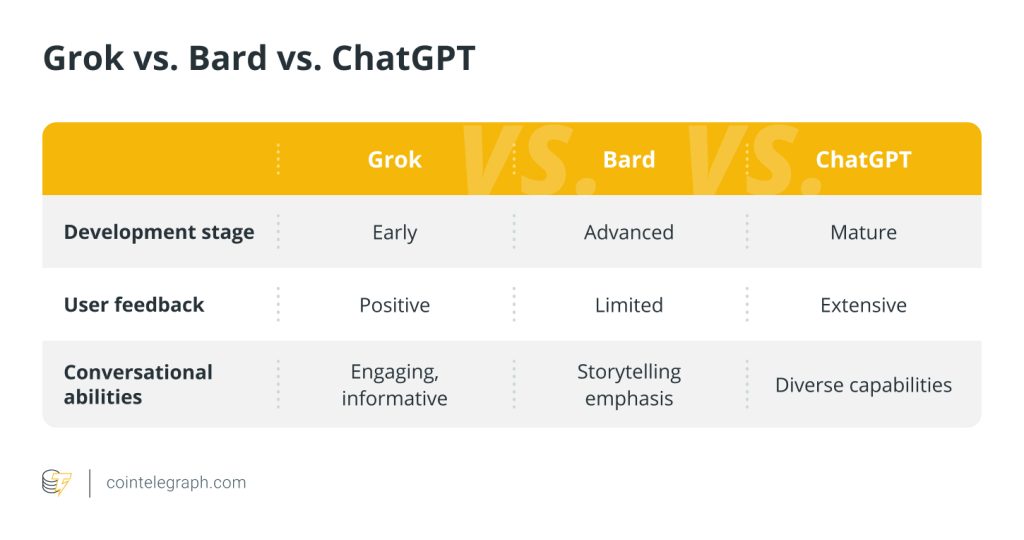
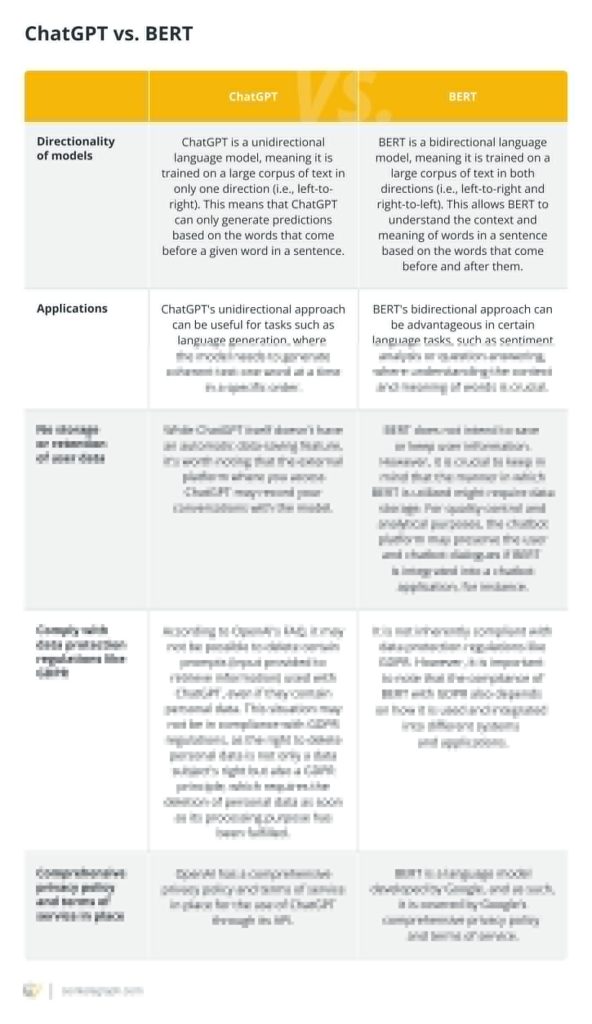
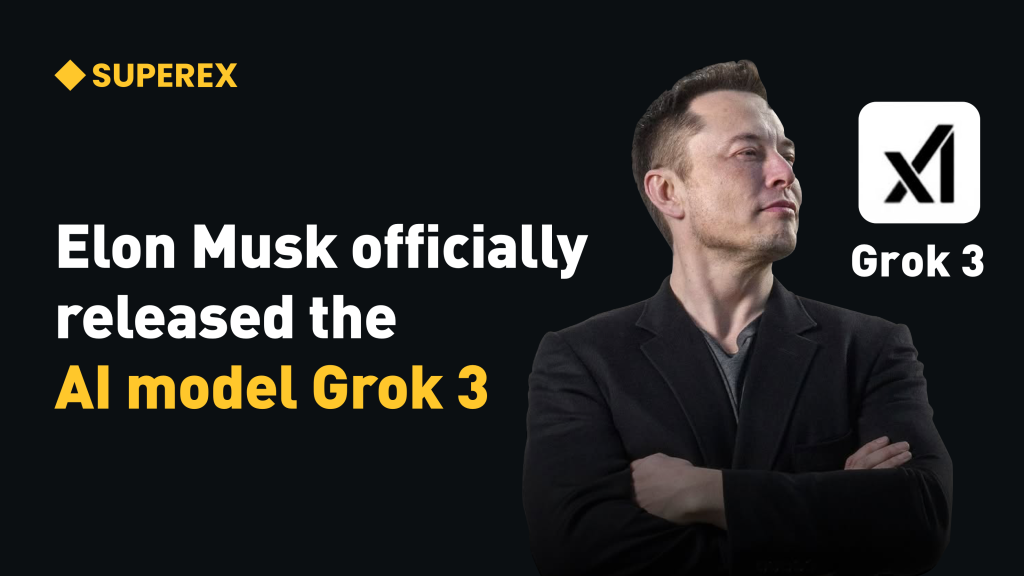
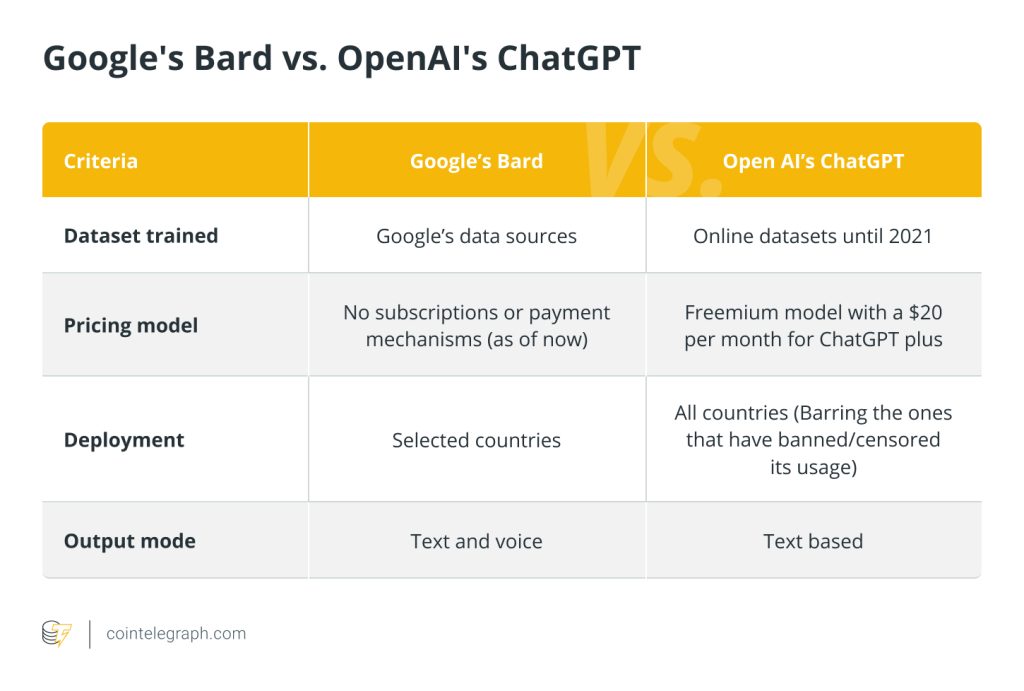

… [Trackback]
[…] Info on that Topic: x.superex.com/academys/beginner/1965/ […]
… [Trackback]
[…] There you can find 75346 additional Information on that Topic: x.superex.com/academys/beginner/1965/ […]
… [Trackback]
[…] Here you can find 64647 more Information to that Topic: x.superex.com/academys/beginner/1965/ […]
… [Trackback]
[…] Read More on on that Topic: x.superex.com/academys/beginner/1965/ […]
… [Trackback]
[…] Read More on that Topic: x.superex.com/academys/beginner/1965/ […]
… [Trackback]
[…] Read More here on that Topic: x.superex.com/academys/beginner/1965/ […]
… [Trackback]
[…] Information on that Topic: x.superex.com/academys/beginner/1965/ […]
… [Trackback]
[…] Find More Information here to that Topic: x.superex.com/academys/beginner/1965/ […]
… [Trackback]
[…] There you can find 1558 more Information on that Topic: x.superex.com/academys/beginner/1965/ […]
… [Trackback]
[…] There you can find 89077 more Information on that Topic: x.superex.com/academys/beginner/1965/ […]
… [Trackback]
[…] Read More here to that Topic: x.superex.com/academys/beginner/1965/ […]
… [Trackback]
[…] Read More on that Topic: x.superex.com/academys/beginner/1965/ […]
… [Trackback]
[…] Information on that Topic: x.superex.com/academys/beginner/1965/ […]
… [Trackback]
[…] There you can find 98032 more Information to that Topic: x.superex.com/academys/beginner/1965/ […]
… [Trackback]
[…] Read More here to that Topic: x.superex.com/academys/beginner/1965/ […]
… [Trackback]
[…] Read More to that Topic: x.superex.com/academys/beginner/1965/ […]
… [Trackback]
[…] Find More on on that Topic: x.superex.com/academys/beginner/1965/ […]
… [Trackback]
[…] There you will find 59821 additional Info on that Topic: x.superex.com/academys/beginner/1965/ […]
… [Trackback]
[…] There you will find 94296 additional Information to that Topic: x.superex.com/academys/beginner/1965/ […]
… [Trackback]
[…] There you can find 68155 additional Information on that Topic: x.superex.com/academys/beginner/1965/ […]
… [Trackback]
[…] Find More Information here on that Topic: x.superex.com/academys/beginner/1965/ […]